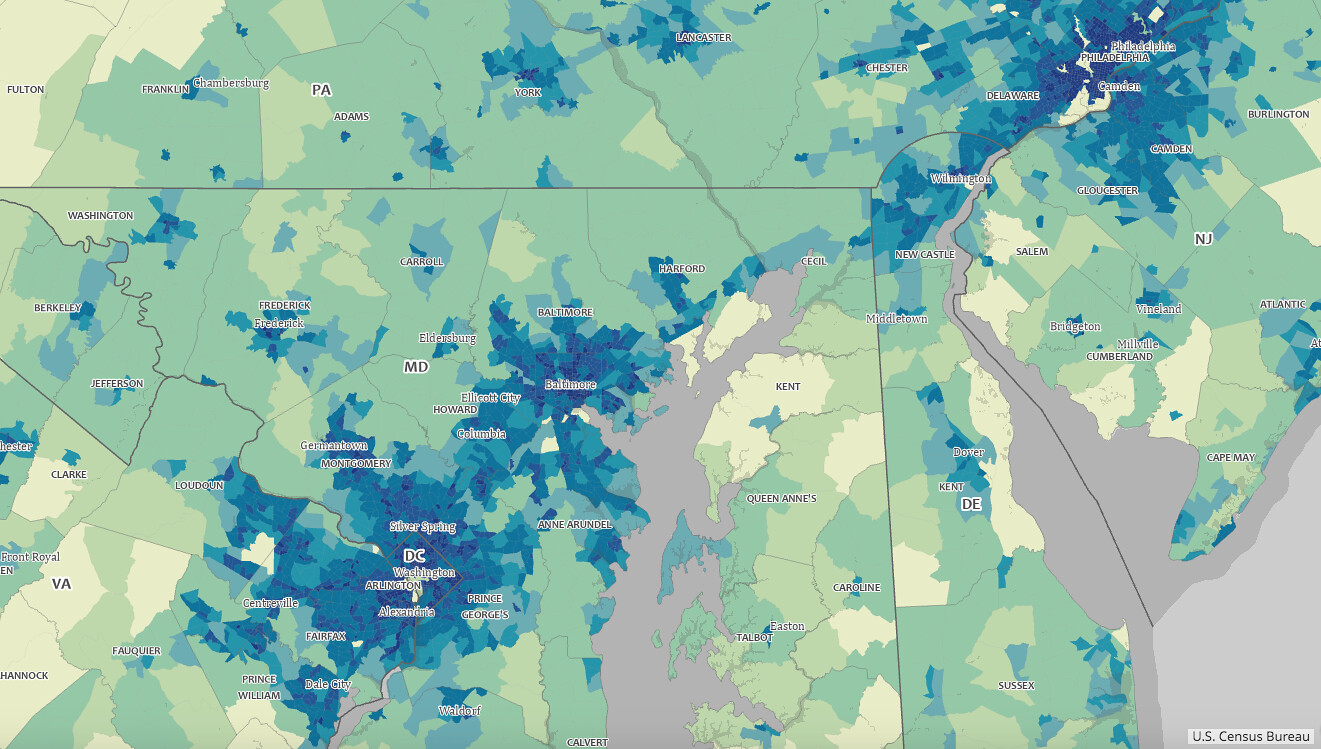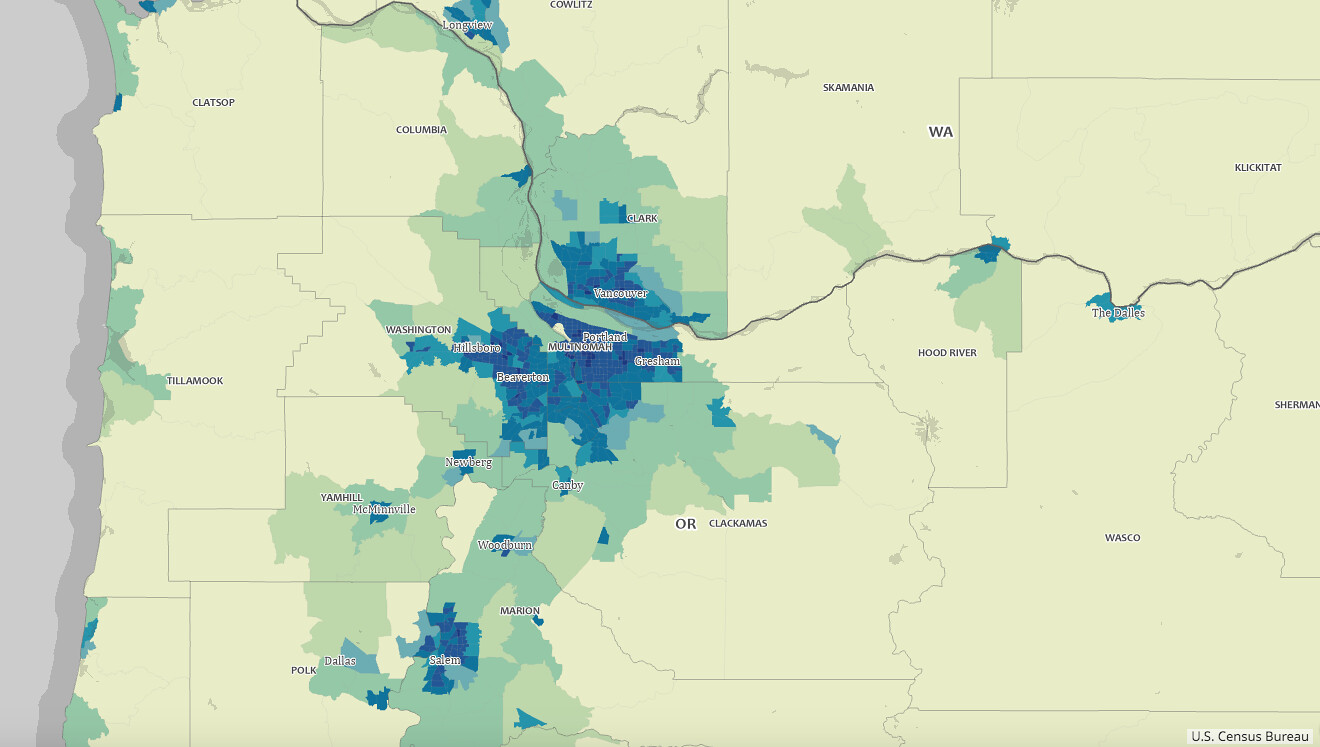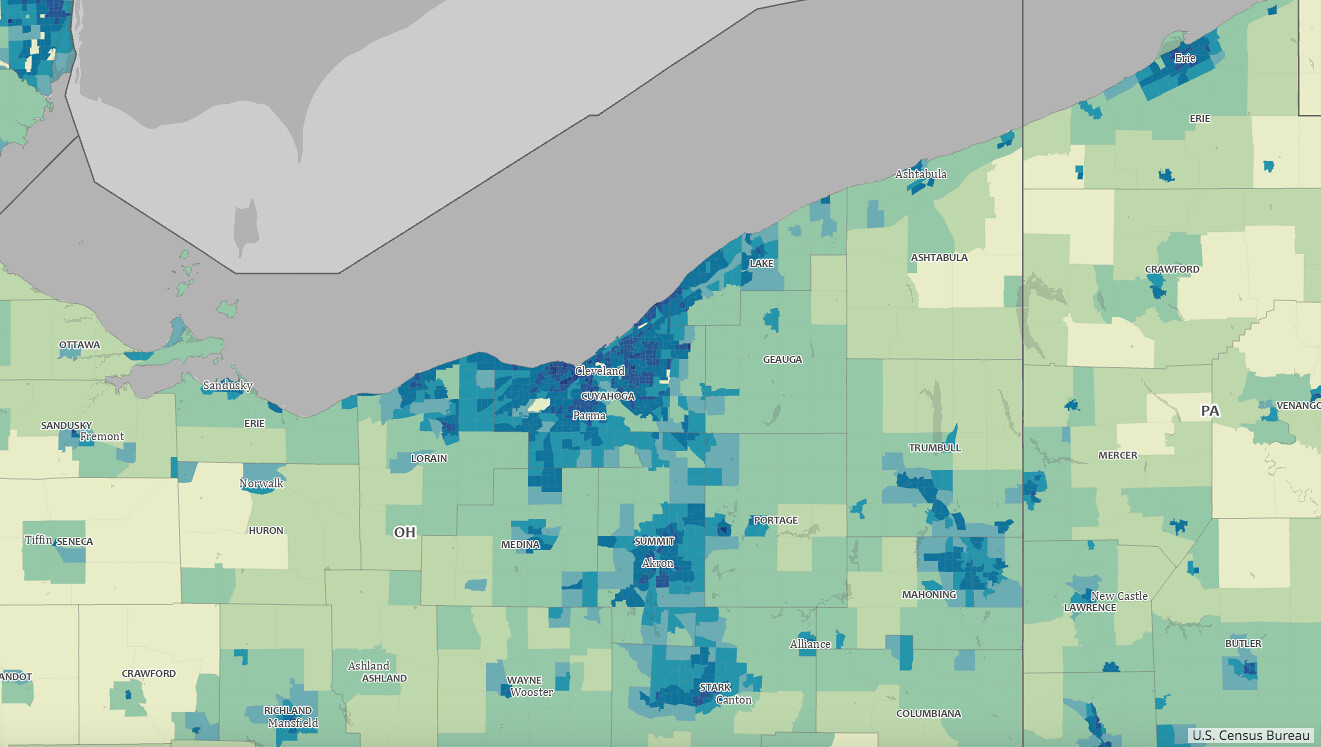It's interesting to me, this transition/perceived transition between metros.
Being that I'm from the Los Angeles area, I tend to measure things in drive time---and of course in miles, too. Being that I know the scale/distances of Greater LA, I thought I'd do some population 2020 Census density maps to scale in comparison to LA.
Greater LA.

San Francisco Bay Area.

Here's Milwaukee-Chicago.

NYC to Philadelphia.

And then Philly to DC.

Here's Miami. I realize Naples, FL is only about a 2-hour drive from Miami. It's funny to me that in this part of the state, it only takes 2 hours to drive from one side of it to the other.

Here's Atlanta. I've never been there, but I guess it's very low-density sprawl?

Here's Austin and Houston. I didn't realize how close they are to each other. People talk about Houston sprawling, but I guess it sprawls differently from LA. At least the way it's portrayed here, it looks compact compared to LA. Like Atlanta, I guess it's more low-density sprawl.

Here's Portland, OR and Salem.

Albuquerque and Santa Fe. Sparse.

Phoenix and Tucson.

Denver and Colorado Springs.

Thought I'd throw in Las Vegas, NV. It looks really small.

Cleveland.

St. Louis, MO. Is it very rural outside of St. Louis?




